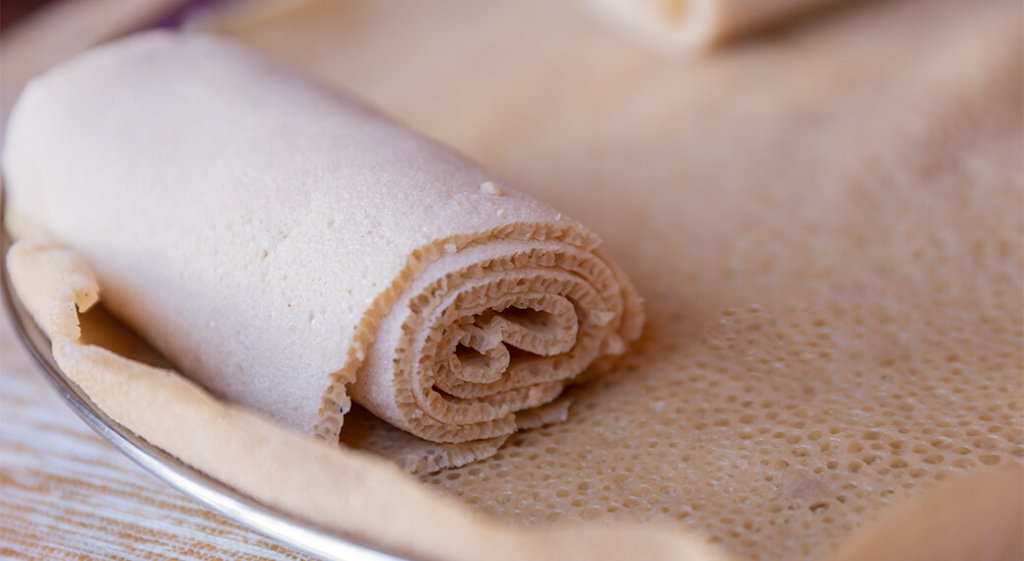Put away your forks and spoons because this bread does it all. In this article, we demystify injera and shed light on what makes this cornerstone of Ethiopian cuisine so special.
Appearance, Texture, & Flavor
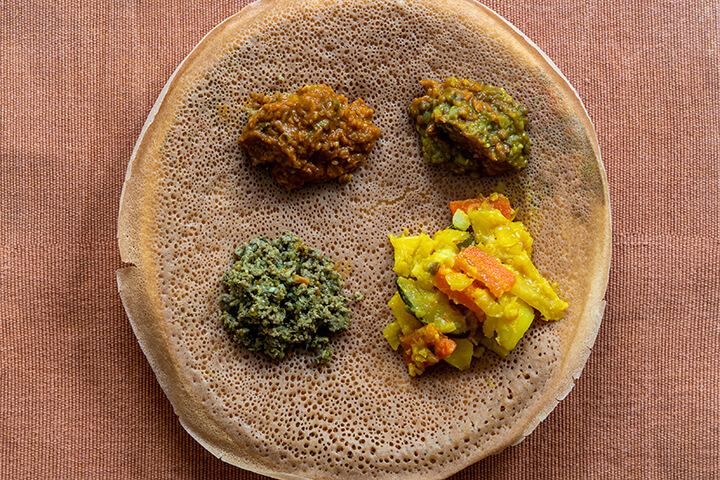
Injera is a slightly sour, spongy flatbread that’s a staple food in Ethiopia and Eritrea. Despite its delicate appearance, injera is surprisingly strong and elastic, and functions as both a plate and a utensil during traditional Ethiopian meals. The communal dining experience involves a large injera platter placed in the center of the table, surrounded by various stews (wots). Diners tear off bite-sized pieces of injera and use them to scoop up the wots.
Teff: The Tiny Powerhouse
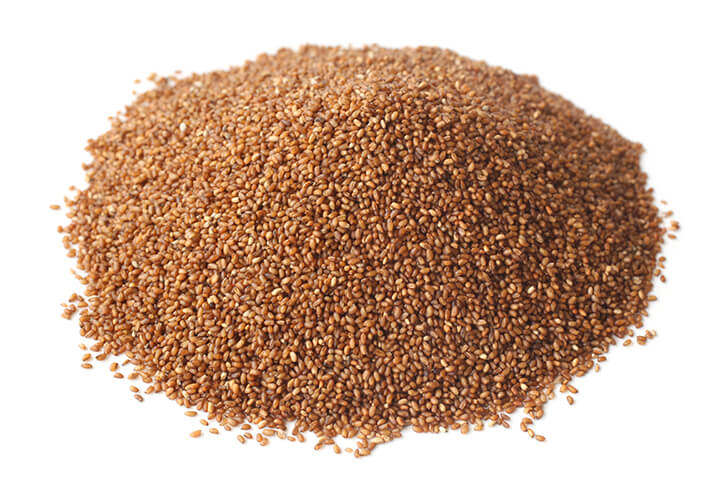
Teff flour, the heart of injera, is the smallest grain in the world, but delivers an impressive nutritional profile. It’s a gluten-free, complete protein, containing all nine essential amino acids. While both quinoa and buckwheat also possess these qualities, quinoa doesn’t ferment well, and the taste of buckwheat lacks the flavor notes of teff that make it so complementary to traditional Ethiopian ingredients.
What’s Fermentation Got to Do With It?
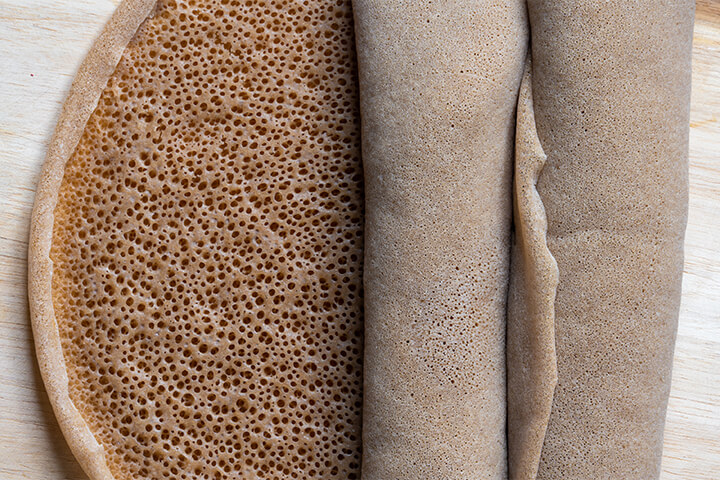
Making injera involves a fermentation process. First, teff flour is mixed with water to form a batter. Then, the batter is inoculated with ersho, a tangy liquid salvaged from previous injera batter fermentations. This bubbly mixture, often passed down through generations, jumpstarts the fermentation process.
Over several days, naturally occurring bacteria and yeast in ersho break down the teff’s complex carbohydrates, creating a batter with a distinct sour flavor and a characteristic rise. Fermentation unlocks teff’s nutrients and contributes to injera’s unique spongy texture, loved by so many.
Gursha
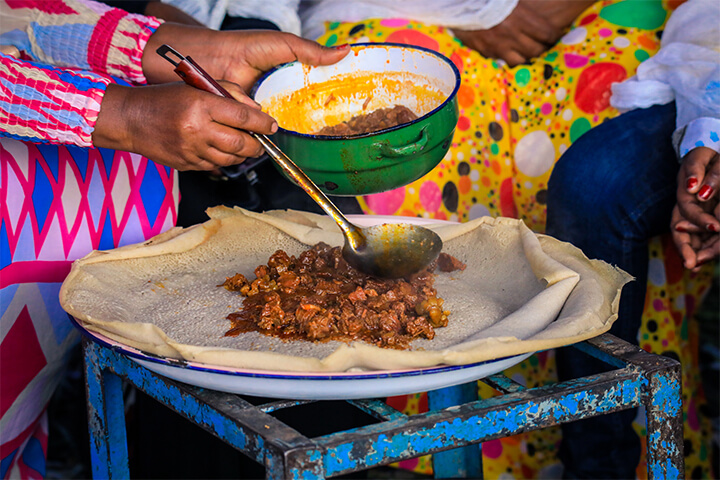
Sharing injera is a sign of respect and affection. For instance, gursha is an Ethiopian custom that literally means “mouthful” in Amharic. Gursha involves scooping a morsel of stew or wot with a piece of injera and feeding it to someone directly by hand. This action signifies love, respect, and a sense of deep connection between the giver and receiver.
Gursha is practiced during various social gatherings, from family meals and celebrations to weddings and everyday interactions with loved ones. It can even be a welcoming gesture extended to strangers by offering them “enebela” (let’s eat!) along with some gursha.
A Taste of Culture & Community
Injera’s unique characteristics, from its fermented tang to its spongy texture, perfectly complement Ethiopian wots. Furthermore, the act of sharing injera, particularly through the custom of gursha, strengthens social bonds and exemplifies the importance of community within Ethiopian culture.

